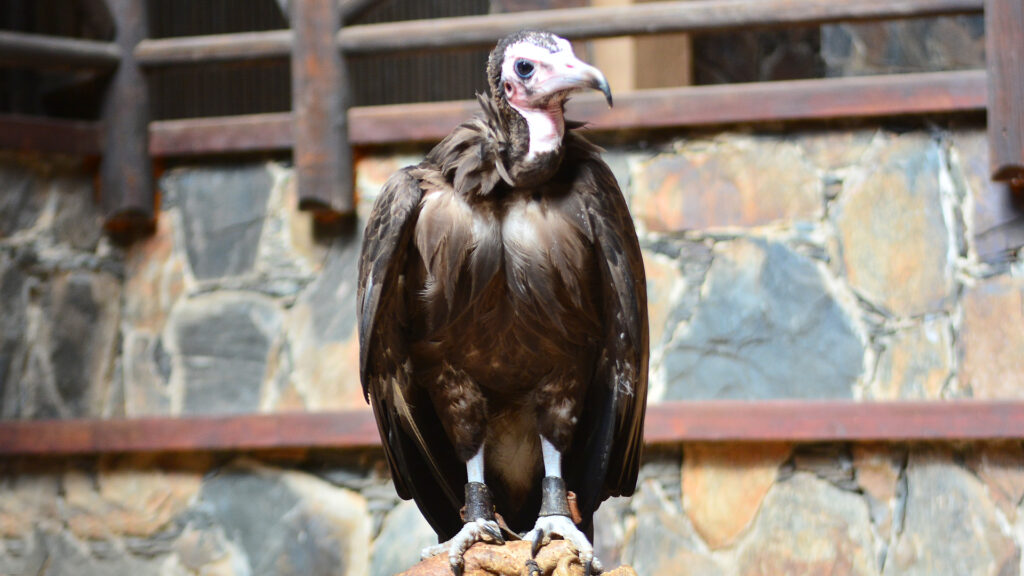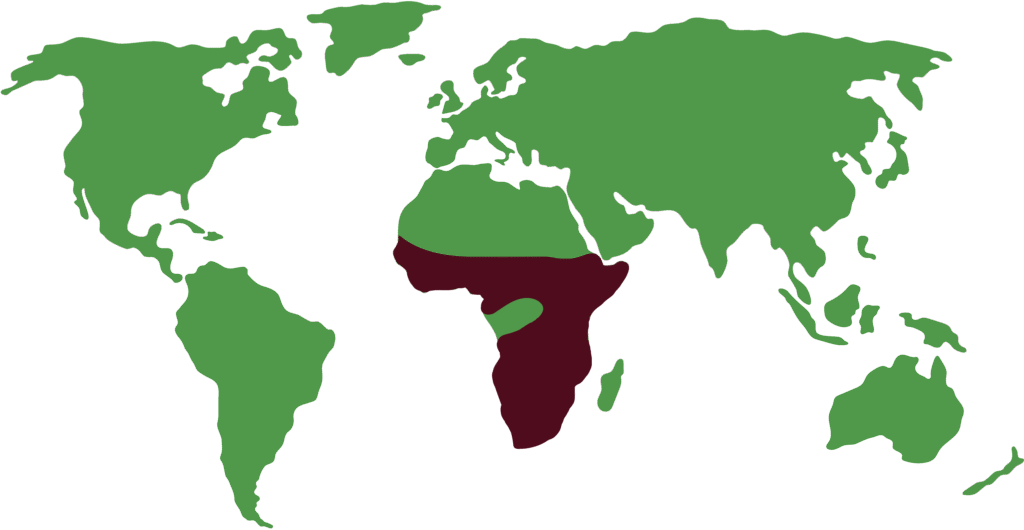HOODED VULTURE
Necrosyrtes monachus

LENGTH

170 – 182 cm
WEIGHT

1,5 – 2,6 kg
LIFESPAN

21 years
The hooded vulture (Necrosyrtes monachus) is an Old World vulture belonging to the Accipitridae family. It is the only member of the genus Necrosyrtes.
General characteristics
This bird reaches an approximate length of 60-70 cm and a wingspan of about 170-182 cm.
It weighs between 1.5 and 2.6 kg and its plumage is predominantly dark, with the head and neck mostly featherless.
There is no strong visible sexual dimorphism: males and females are very similar, although females may be slightly larger.
Feeding
It feeds mainly on carrion (dead animals) and also on waste, offal and scraps available in rubbish dumps or markets. It uses its good eyesight and agility to quickly reach the carcass, although it cannot always open it if it is tough, so it depends on other larger vultures for that task.
Behaviour
The hooded vulture is a diurnal bird that largely acts as a cleaner of the ecosystem, consuming animal remains and thus preventing disease.
It is usually solitary or forms small groups, and tolerates human presence in areas where it is accustomed to it.
Reproduction
It builds its nest in tall trees, often in areas with abundant vegetation.
The clutch usually consists of a single egg, with a prolonged incubation and rearing period, sometimes lasting several months after the chick’s first flights.
Threats
This species is threatened by poisoning (intentional or accidental when consuming carrion treated with pesticides), habitat loss, hunting for traditional medicine, and reduction of food sources.
Distribution
It is widely distributed across the savannahs of sub-Saharan Africa, from west to east and southwards. It inhabits savannahs, open areas with scattered trees, forest edges and also urban environments.

Did you know?
When excited or agitated, its bare face can turn bright red, while when frightened, it turns whitish.
It is one of the smallest vultures in the Old World, which gives it an advantage in terms of speed when reaching carrion, but a disadvantage when it comes to opening it on its own.
It frequents rubbish dumps and markets in African urban areas where it acts as a “cleaner” of remains, bringing it very close to humans.
Conservation status
